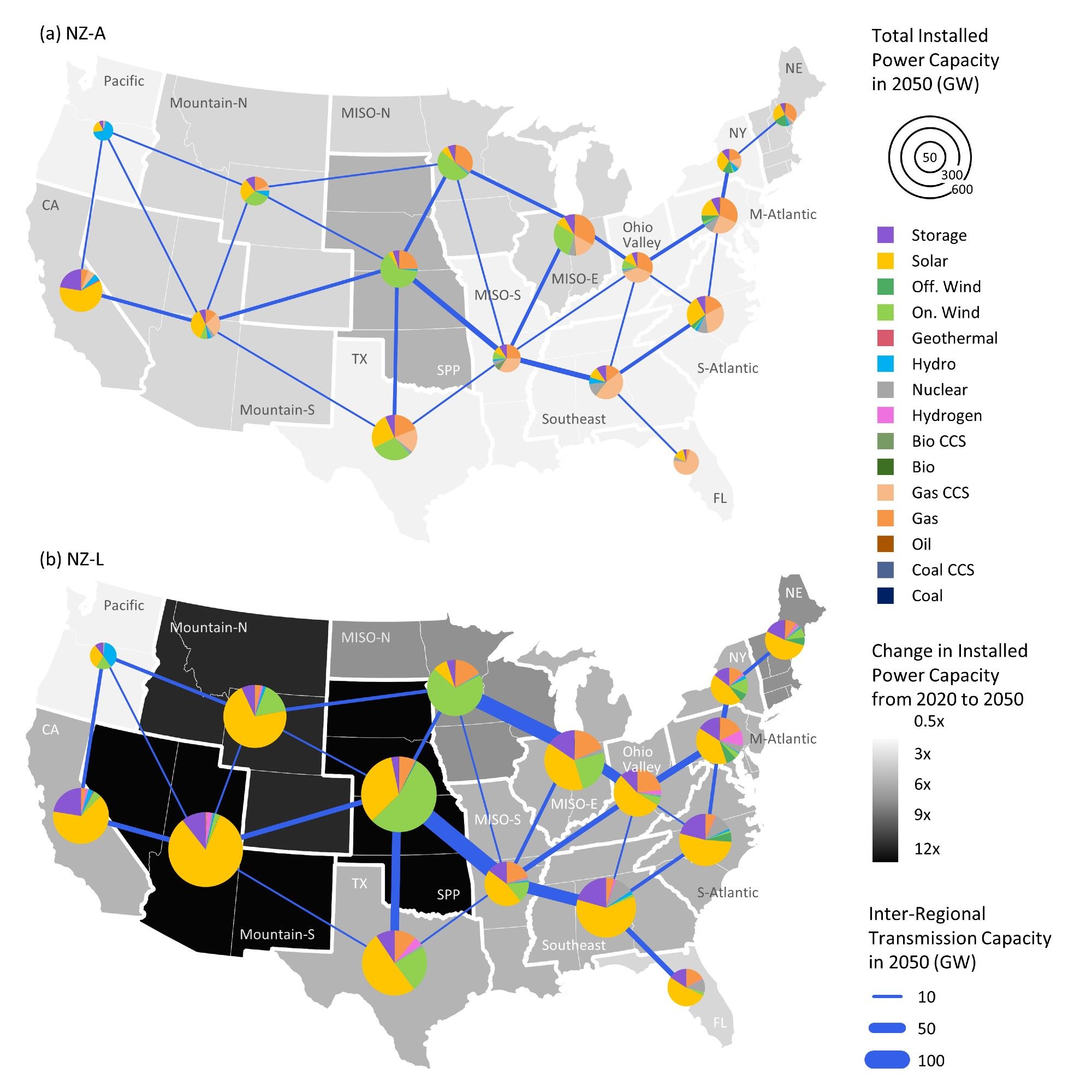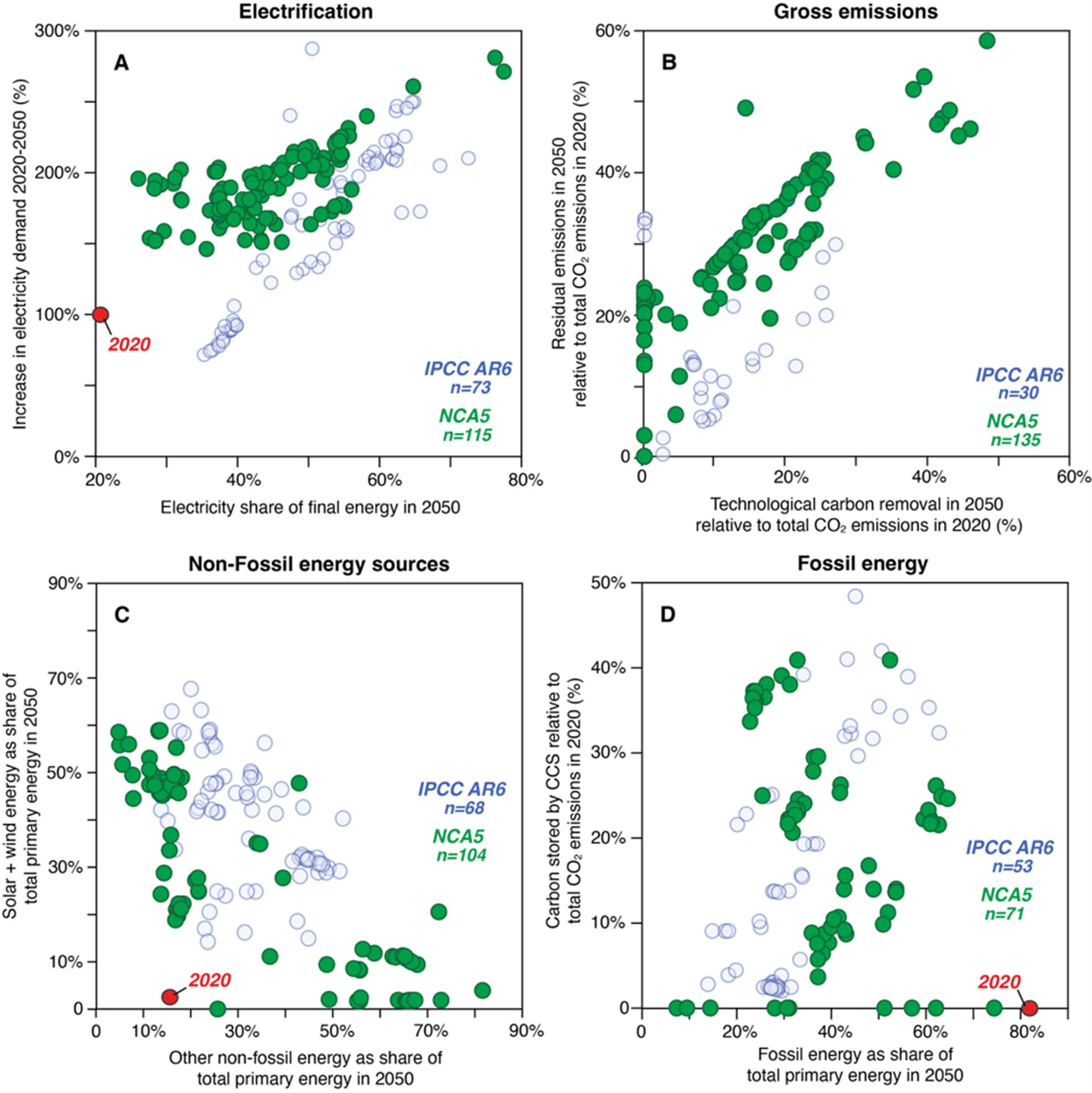
For more, also check out our Mitigation chapter in the NCA: nca2023.globalchange.gov/chapter/32/bsky.app/profile/bist...
I want to give a huge thanks to IIASA and @danielhuppmann.bsky.socialdata.ece.iiasa.ac.at/nca5
Another caveat for using scenario ensembles for uncertainty analysis: Scenarios don't represent a full set of uncertainties faced by decision-makers, so outcomes are likely even broader than database ranges suggest
Insight 4: Policy design uncertainty represents transition risk that may not be represented in scenario databases, which often look at reaching targets with carbon fees/caps. This figure shows how a tech-neutral approach (top) differs from one that doesn't allow CCS (bottom).

Insight 3: National values can mask large regional diversity in decarbonization strategies. For instance, some regional power sector mixes may be dominated by wind and solar, while others with lower resource quality could deploy more on nuclear or CCS.

Likewise, models agree on the general shift away from fossil fuels and toward wind and solar, but net-zero systems vary significantly in their primary energy mixes

Insight 2: Although models agree on broad trends, there's a lot of variation in extent. Take electricity: All paths entail greater electrification, but there's a wide range of demand growth due to electrolytic H2, offsetting efficiency, and electrification rates.

In contrast, current third-party benchmarks have narrower uncertainty bounds: Climate Action Tracker's power sector CO2 benchmarks are 90-95% reductions by 2030, compared with 43-92% in the NCA 5 database

Insight 1: Many emissions pathways can be consistent with a national net-zero goal. One-size-fits-all targets ignore heterogeneity in abatement across sectors and geographies, leading to goals that may be too easy for some and too challenging for others.

Why ensembles? Scenario ensembles are useful to highlight which findings are robust and which are more uncertain. Much like storm tracks, ensembles provide information on future uncertainties, which single models may not provide.


